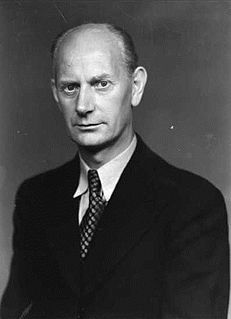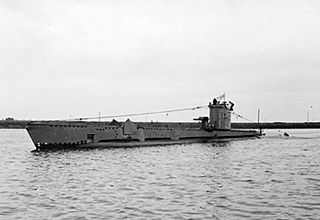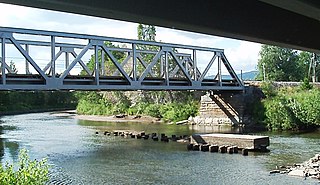 W
WParliamentary elections were held in Norway on 8 October 1945, the first following World War II and the end of the German occupation. The result was a victory for the Labour Party, which won 76 of the 150 seats in the Storting, the first time a party had won a majority since the 1915 elections.
 W
WThe Action of 28 January 1945 was an inconclusive naval battle of the Second World War fought between two British Royal Navy light cruisers and three Kriegsmarine destroyers near Bergen, Norway. The battle was the last of many actions between British and German warships off Norway during the war and the second-to-last surface engagement to be fought by the Kriegsmarine. It resulted in heavy damage to one of the German destroyers and light damage to another destroyer and both British cruisers.
 W
WDuring the action of 9 February 1945, the Royal Navy submarine HMS Venturer attacked and sank the German U-boat U-864 in the North Sea off the Norwegian island of Fedje.
 W
WThe Battle of Haglebu on 26 April 1945 was a skirmish towards the end of the German occupation of Norway in the Second World War. A patrol of German and Norwegian police troops had been tipped off that weapons were hidden in Haglebu and came up from Eggedal on a search. On the southern shore of Haglebuvannet, the German force divided to search both sides of the lake. On the western side, the Germans received machine-gun fire from the Norwegian resistance movement (Milorg) and soon came under attack on the eastern side as well. After about four hours, during which the Norwegians repulsed the German assaults, Milorg carried out an orderly withdrawal before German reinforcements arrived.
 W
WOn 9 February 1945, a force of Allied Bristol Beaufighter aircraft suffered many losses during an attack on the German destroyer Z33 and its escorting vessels; the operation was called "Black Friday" by the Allied survivors. The German ships were sheltering in a strong defensive position in Førde Fjord, Norway, forcing the Allied aircraft to attack through massed anti-aircraft fire.
 W
WOperation Claw was a joint Swedish–American operation, with Norwegian support, that was carried out at Lillehammer shortly after the German capitulation by the end of World War II. Thirty-five German intelligence specialists were transferred along with various equipment first to Sweden and then to U.S. camps in occupied Germany through an agreement between the Americans and the German High Command of the Wehrmacht in Norway.
 W
WThe Liberation of Finnmark was a military operation, lasting from 23 October 1944 until 26 April 1945, in which Soviet and Norwegian forces wrested away control of Finnmark, the northernmost county of Norway, from Germany. It started with a major Soviet offensive that liberated Kirkenes.
 W
WIn Operation Doomsday, the British 1st Airborne Division acted as a police and military force during the Allied occupation of Norway in May 1945, immediately after the victory in Europe during the Second World War. The division maintained law and order until the arrival of the remainder of Force 134, the occupation force. During its time in Norway, the division was tasked with supervising the surrender of the German forces in Norway, as well as preventing the sabotage of vital military and civilian facilities.
 W
WOperation Haudegen was the name of a German operation during the Second World War to establish meteorological stations on Svalbard. In September 1944, the submarine U-307 and the supply ship Carl J. Busch transported the men of Unternehmen Haudegen to the island. The station was active from 9 September 1944 to 4 September 1945 but lost radio contact in May 1945. The soldiers were capable of asking for support only in August 1945 and on 4 September, were picked up by a Norwegian seal hunting vessel and surrendered to its captain. The group of men were the last German troops to surrender after the Second World War.
 W
WOperation Judgement was an operation carried out at the end of the Second World War by the Home Fleet of the British Royal Navy in North Norway on 4 May 1945. A force of 44 Fleet Air Arm aircraft of the attacked a U-boat base 5 mi (8.0 km) south of the town and port of Harstad. The attack was directed at vessels in the natural harbour at Kilbotn. It lasted seven minutes and left two ships and a U-boat sunk. No Norwegians in the village of Kilbotn were killed or injured during or after the attack. Operation Judgement was the last air raid of the war in Europe.
 W
WOperation Woodlark, also known as the Jørstadelva Bridge sabotage, was an operation carried out on 13 January 1945 by members of the Norwegian Independent Company 1 during the Second World War The aim was to blow up a railway bridge in order to disrupt the Nordland Line railway in Snåsa, Norway. Six hours after the bridge had been destroyed, a military troop train was derailed and crashed into the river below, killing 70–80 people and injuring some 100 more. It is the most deadly rail incident ever in Norway.
 W
WThe Western Front was a military theatre of World War II encompassing Denmark, Norway, Luxembourg, Belgium, the Netherlands, the United Kingdom, France, Italy, and Germany. World War II military engagements in Southern Europe and elsewhere are generally considered as separate theatres. The Western Front was marked by two phases of large-scale combat operations. The first phase saw the capitulation of the Netherlands, Belgium, and France during May and June 1940 after their defeat in the Low Countries and the northern half of France, and continued into an air war between Germany and Britain that climaxed with the Battle of Britain. The second phase consisted of large-scale ground combat, which began in June 1944 with the Allied landings in Normandy and continued until the defeat of Germany in May 1945.
 W
WThe "White Buses" was an operation undertaken by the Swedish Red Cross and the Danish government in the spring of 1945 to rescue concentration camp inmates in areas under Nazi control and transport them to Sweden, a neutral country. Although the operation was initially targeted at saving citizens of Scandinavian countries, it rapidly expanded to include citizens of other countries. Folke Bernadotte, Count of Wisborg, a Swedish nobleman and diplomat who was then vice-president of the Swedish Red Cross, negotiated the release of about 31,000 prisoners from German concentration camps.